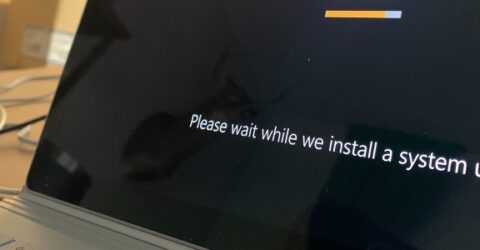Do I really need to do system updates on my computer?
They are annoying and often inconveniently timed, but system updates can be crucial for the health of your PC or Mac.

Picture the scene. It’s the end of a long working day, and you’re about to shut down your computer before leaving your desk.
However, your computer has other ideas, choosing that moment to begin installing system updates.
These typically require at least one restart, which in turn requires either leaving the device running overnight or waiting until it finishes before manually powering it down.
Such scenarios are a common source of frustration, yet they’re an unavoidable necessity for the owners of desktop and laptop computers, smartphones and tablets.
However, although their timing is often poor, system updates are an invaluable part of ensuring operating systems continue to function effectively.
System of a down
As well as giving hardware a few moments of valuable downtime (when hardware components can cool down), system updates help to keep devices running optimally.
They might help to optimise network connectivity, scan drives for corrupt files or simply improve the performance of specific components.
However, most updates are focused on one of two key priorities.
Installing software updates and new driver software is the first reason why a system update shouldn’t be ignored.
Hardware manufacturers and software developers alike are constantly discovering unforeseen bugs, or developing new functionalities, for operating systems and installed programs alike.
Rather than uninstalling and reinstalling programs from scratch, it’s more effective to add new segments of program code as they’re released – a process known as patching.
There is no limit to the amount of patching which can go on during the lifetime of an operating system or device, so there’s no need to be concerned about routine updates.
It’s often necessary as conflicts arise with new software – incompatibility issues between different software packages can’t always be predicted during pre-release testing.
Occasionally, an update concerns the deletion of outdated features, or drivers which are no longer needed.
This helps to free up space on hard drives that may become increasingly short of available storage as they accumulate user-generated content, media files and program code.
Going viral
The other key reason why software updates should be permitted whenever they’re scheduled to take place is because they optimise the device’s resistance against threats.
Removing malware and viruses is no longer the exclusive preserve of third-party antivirus packages, as it was twenty years ago.
Increasingly, utilities baked into operating systems also fight zero-day malware, worms and viruses. The acclaimed Windows Defender is perhaps the best-known example of this.
If a software developer discovers a vulnerability affecting one of their programs, releasing a protective patch narrows the window of opportunity for cybercriminals to exploit this weakness.
A free update could mitigate against costly data breaches, identity theft and other security threats, helping to keep you safe online.
That’s why you should always permit a system update at the first available opportunity, regardless of how annoying it might be.






